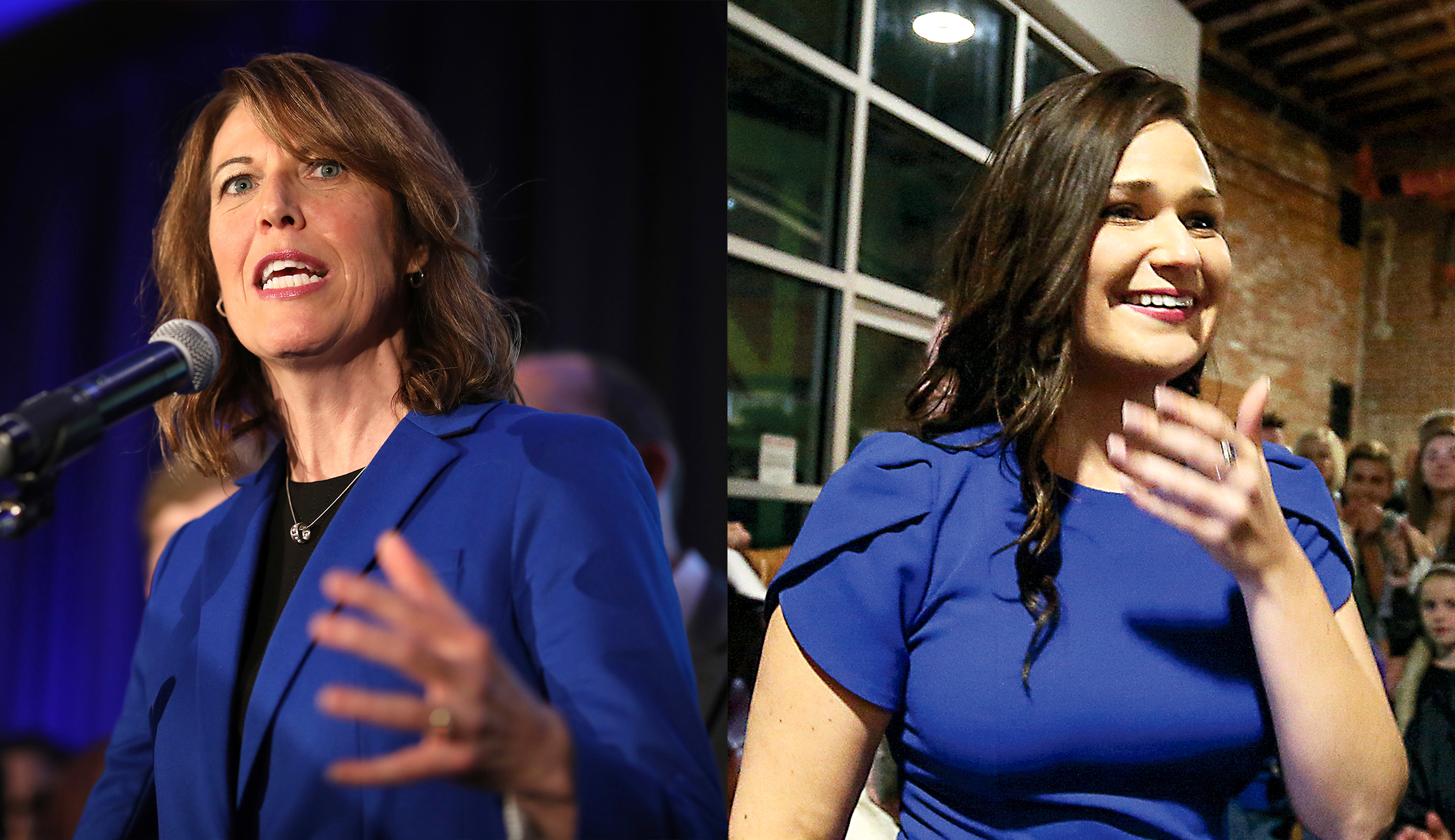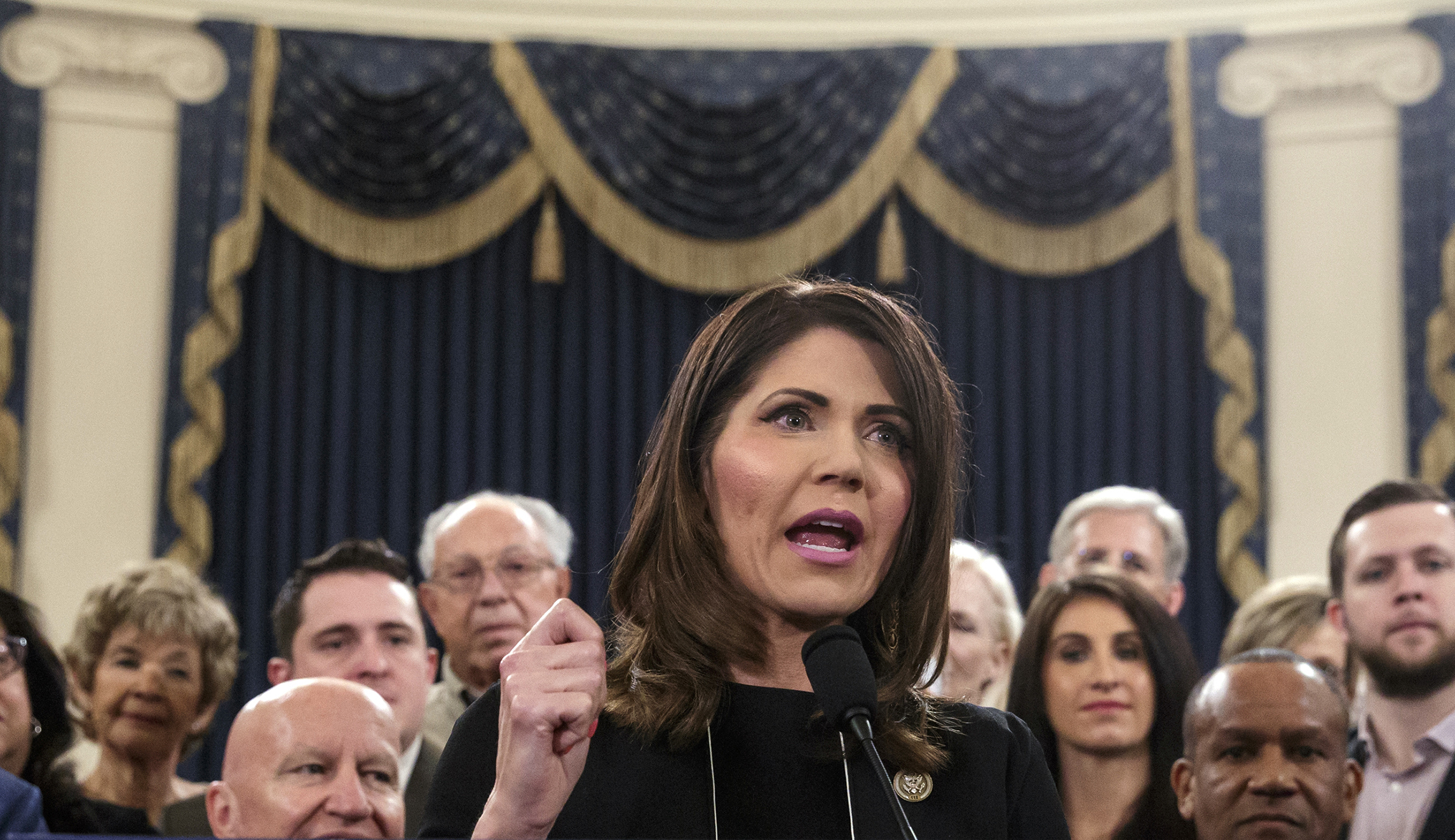Women have already secured 95 seats in the next House of Representatives — the largest number in history, shattering the previous record of 84, the current number. Once all the ballots are counted, more than 100 may be headed to Capitol Hill to serve two-year terms, along with 13 female senators who will take their seats alongside another 10 already serving.
This means that at least 118 women will serve in the 116th Congress, up from the current 107. It will bring the percentage of female members up from the current 20 percent to at least 22 percent.
Here are some of the women elected to Congress who made history this week:

Ayanna Pressley and Jahana Hayes
Ayanna Pressley, a Democrat, became the first black woman ever elected to represent Massachusetts in Congress after she won her race in Massachusetts’ 7th Congressional District. “When it comes to women of color candidates, folks don’t just talk about a glass ceiling — what they describe is a concrete one,” Pressley tweeted Wednesday. “WE broke that concrete wide open.”
Pressley, who beat Democrat Mike Capuano in the primary race, ran unopposed on Tuesday.
Jahana Hayes, also a Democrat, became the first black woman to represent Connecticut in Congress and will replace Rep. Elizabeth Esty in the state’s 5th Congressional District.

Alexandria Ocasio-Cortez
Alexandria Ocasio-Cortez, 29, won her race for New York’s 14th Congressional District, and became the youngest woman ever elected to Congress.
Ocasio-Cortez, a Democratic Socialist, defeated Democratic incumbent Rep. Joe Crowley in June during the primary race. She ran on progressive positions such as “Medicare for All” and abolishing U.S. Immigration and Customs Enforcement. Rep. Elise Stefanik, R-N.Y., who was elected in 2014 when she was 30, was previously the youngest woman elected to Congress.

Marsha Blackburn
Rep. Marsha Blackburn, R-Tenn., won her bid for Senate and became the first woman elected to the Senate to represent Tennessee. She defeated the state’s former governor Phil Bredesen, a Democrat who was endorsed by pop star Taylor Swift in October.
“Well I hope Taylor will shake it off,” Blackburn said during an appearance on “Fox & Friends” Wednesday morning, referencing Swift’s hit song “Shake It Off.” Blackburn will replace outgoing Republican Sen. Bob Corker.

Cindy Axne and Abby Finkenauer
Cindy Axne and Abby Finkenauer, both Democrats, became the first women to represent Iowa in the House. Women from the state have served as governors and in the Senate, but not in the House. The Democratic women ousted Republican incumbents in both their races.

Rashida Tlaib and Ilhan Omar
Rashida Tlaib and Ilhan Omar, both Democrats, became the first Muslim women to be elected to Congress.
Tlaib ran unopposed for Michigan’s 13th Congressional District seat previously held by Democratic Rep. John Conyers, who resigned earlier this year following allegations of sexual misconduct. Omar, who is also the first Somali-American U.S. lawmaker elected, secured a win in Minnesota’s 5th Congressional District on Tuesday. The seat was previously held by Rep. Keith Ellison, who won his race for the state’s attorney general race.
“The opportunity to be here, to participate in this democracy, has made me want to dance, and door-knock and talk to people and invite people to the joy of what it means to participate in a democracy,” Omar said Monday before the election to a group of volunteers. “What I want to do for you is have my energy be contagious.”

Sharice Davids and Deb Haaland
Democrats Sharice Davids and Deb Haaland became the first Native American women elected to Congress. Haaland won her race for in New Mexico’s 1st Congressional District against Republican Janice Arnold-Jones.
Davids, who is also one of the first openly lesbian members of Congress, was elected to Kansas’ 3rd Congressional District in a contest against incumbent Republican Kevin Yoder. “We are going to elect more women this year, we’re going to elect more people who are L.G.B.T., we’re going to elect more people who are people of color,” Davids said in an interview with the New York Times in August. “This midterm election cycle is our opportunity to demonstrate who we are as a country.”

Kristi Noem
South Dakota elected its first female governor on Tuesday: Republican Kristi Noem. Noem beat Democrat Billie Sutton and received praise from current South Dakota Gov. Dennis Daugaard, who said “Kristi has been an excellent member of Congress and I know she will be a great governor.” Noem left college to help run her family’s ranch after her father was killed in a farm machine accident. An avid hunter and mother of three children, Noem was first elected to the House of Representatives in 2010.

Veronica Escobar and Sylvia Garcia
Texas has never had any Latinas represent the state in the House of Representatives, but now will have two on Capitol Hill in the next Congress. El Paso County Judge Veronica Escobar and Texas state Senator Sylvia Garcia, both Democrats, won their races Tuesday.
“This election for me is not just about getting out the vote and defeating my opponents,” Escobar said last year after she announced she was running, per NBC News. “We want to send a very powerful message to Washington, D.C. that the border [community] will not sit on the sidelines during an era of unprecedented racism.”

Martha McSally
The race to replace outgoing Arizona Sen. Jeff Flake, R-Ariz., has not been called yet, but Republican Rep. Martha McSally appears to be heading for victory with 99 percent of precincts reporting. According to the New York Times, McSally has received 850,043 votes, in comparison to her Democratic challenger Rep. Kyrsten Sinema, who has received 834,135 thus far.
McSally was the first female pilot to fly a fighter jet in combat and the first woman to command a fighter squadron. She retired in 2010 as a full colonel in the United States Air Force. During her 26 years in the military, she served six tours in the Middle East and Afghanistan, logging 325 combat hours and earning a Bronze Star and six Air Medals.
She once described a mission over Afghanistan: “On my last rocket pass, my heads up display failed with all of our computerized weapons sights. I had to rely on the very archaic backup called ‘standby pipper,’ which was a hard sight. I needed to quickly get ready to shoot the gun manually, where I had to be at an exact dive angle, airspeed, and altitude when opening fire in order to be accurate. We destroyed the enemy on several passes. We train for this type of malfunction, but I never would have imagined shooting the gun in standby pipper in combat like this.”

